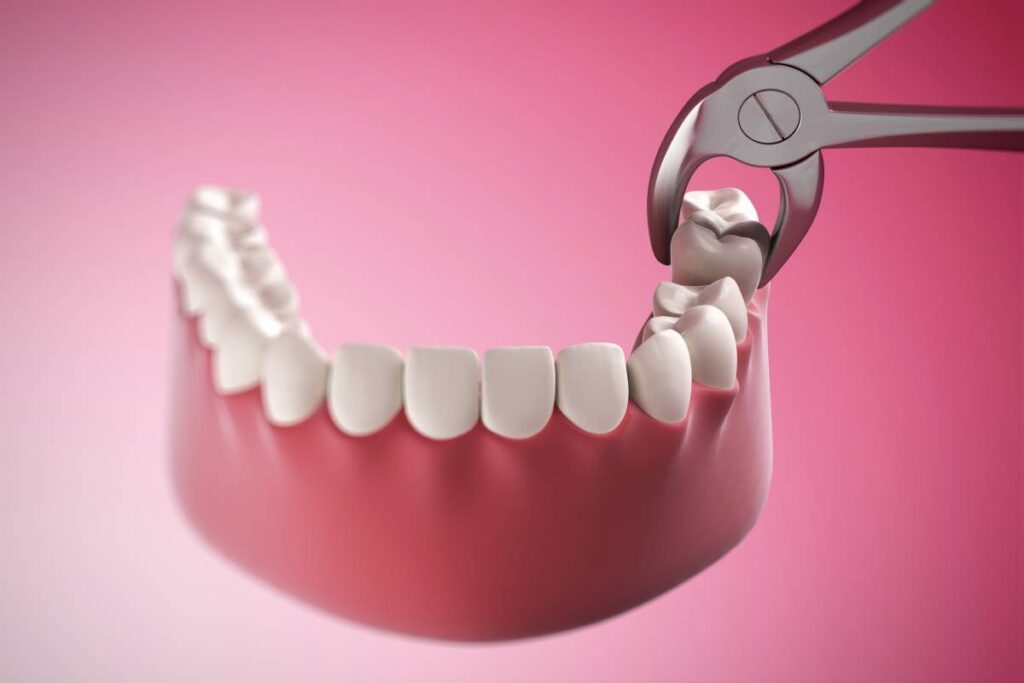
Maintaining optimal oral health is essential for general health, and frequently, tooth extraction becomes the first step in maintaining that health. While dentists aim to preserve natural teeth wherever possible, certain symptoms suggest that extraction may be the best option. In this article, we will explore seven key indicators that suggest you may need a tooth extraction.
1. Persistent pain and discomfort
Persistent pain and discomfort are two of the most prominent indications that you may require a tooth extraction. While toothaches can be caused by a variety of conditions, persistent and severe pain may suggest a more serious problem. This pain might be caused by severe tooth decay, infection, or an abscess. If the pain persists despite conservative treatments such as fillings or root canals, your dentist can recommend extraction to relieve your discomfort and avoid additional issues. If you search “tooth extraction near me,” be sure that you choose an experienced and qualified specialist.
2. Advanced gum disease
Gum disease, also known as periodontal disease, may catastrophically affect your dental health. In its advanced stages, it can cause the breakdown of the supporting structures around your teeth, including the bone. When this happens, your teeth may become loose and unstable. Extraction may be essential in these cases to prevent infection from spreading to surrounding teeth and to maintain the general stability of your oral environment. Regular dental examinations may help recognize gum disease in its early stages, allowing for more conservative treatments.
3. Impacted wisdom teeth
Wisdom teeth, often known as third molars, can be difficult to erupt. These teeth normally emerge between the ages of 17 and 25, and they may become impacted due to limited space in the jaw. Impacted wisdom teeth can cause pain, swelling, and difficulty cleaning, making them prone to infection and deterioration. Extraction is frequently indicated in these cases to avoid problems and protect the health of the neighboring teeth.
4. Irreparable tooth damage
Accidents, trauma, or extensive decay may result in irreversible damage to a tooth. When a tooth’s structural integrity is weakened beyond repair, extraction may be the only option. Before considering extraction, dentists will assess the amount of damage and take into account factors such as the remaining tooth structure, the possibilities for restoration, and the impact on surrounding teeth.
5. Overcrowding
Overcrowding of teeth can cause a variety of complications, including difficulty maintaining proper oral hygiene and an increased risk of dental problems. Overcrowding is often solved with orthodontic treatments like as braces or aligners, but in severe cases, extraction may be required to make enough room for the remaining teeth to align properly. Dentists and orthodontists collaborate to identify the optimal treatment plan for each individual case, taking into account both the cosmetic and functional elements of the smile.
6. Chronic infections
Chronic dental infections, such as recurring abscesses, may compromise your oral and general health. If an infection persists despite multiple treatment attempts, extraction may be the only choice for eliminating the source of the infection and preventing it from spreading. Ignoring persistent infections can lead to serious problems, including the possibility of systemic infections, therefore prompt treatment is critical.
7. Fractured or broken teeth
Teeth are strong, but not invincible. Accidents, traumas, or even long-term wear and tear can result in tooth fractures or breaks. When the damage is significant and compromises the structural integrity of the tooth, extraction may be the best option. Before recommending extraction, dentists will assess the location and extent of the fracture, the possibility for repair, and its effect on surrounding teeth.
The bottom line
While tooth extraction can seem to be a terrifying idea, it is often necessary to protect general dental health and avoid future problems. Regular dental check-ups, proper oral hygiene habits, and prompt attention to dental disorders may help in the early detection of problems, allowing for more conservative treatments. If you experience any of the aforementioned symptoms, contact your dentist right away to discuss the best course of action for your particular case. Remember that early intervention may often make all the difference in maintaining your natural smile.





